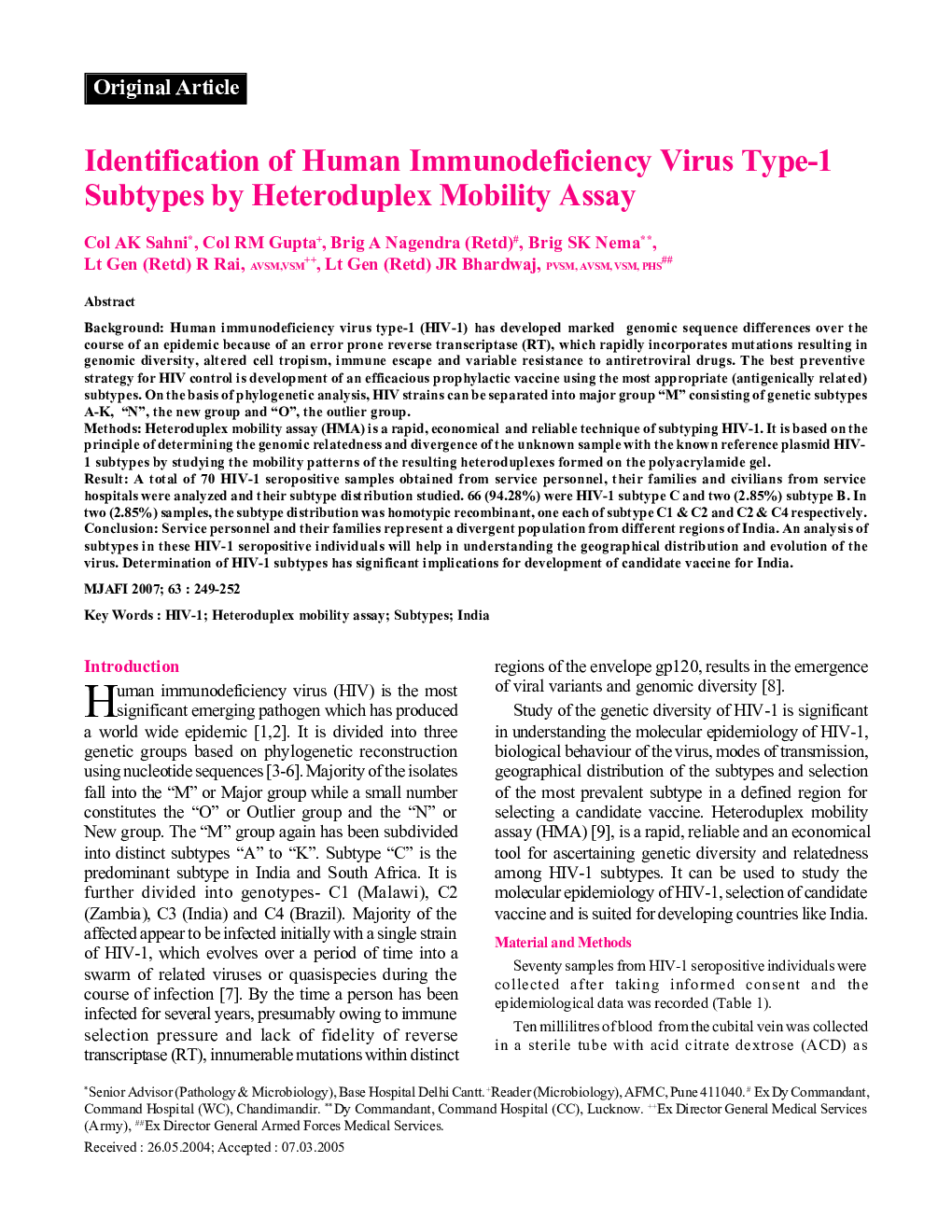| Article ID | Journal | Published Year | Pages | File Type |
|---|---|---|---|---|
| 3161851 | Medical Journal Armed Forces India | 2007 | 4 Pages |
BackgroundHuman immunodeficiency virus type-1 (HIV-1) has developed marked genomic sequence differences over the course of an epidemic because of an error prone reverse transcriptase (RT), which rapidly incorporates mutations resulting in genomic diversity, altered cell tropism, immune escape and variable resistance to antiretroviral drugs. The best preventive strategy for HIV control is development of an efficacious prophylactic vaccine using the most appropriate (antigenically related) subtypes. On the basis of phylogenetic analysis, HIV strains can be separated into major group “M” consisting of genetic subtypes A-K, “N”, the new group and “O”, the outlier group.MethodsHeteroduplex mobility assay (HMA) is a rapid, economical and reliable technique of subtyping HIV-1. It is based on the principle of determining the genomic relatedness and divergence of the unknown sample with the known reference plasmid HIV-1 subtypes by studying the mobility patterns of the resulting heteroduplexes formed on the polyacrylamide gel.ResultA total of 70 HIV-1 seropositive samples obtained from service personnel, their families and civilians from service hospitals were analyzed and their subtype distribution studied. 66 (94.28%) were HIV-1 subtype C and two (2.85%) subtype B. In two (2.85%) samples, the subtype distribution was homotypic recombinant, one each of subtype C1 & C2 and C2 & C4 respectively.ConclusionService personnel and their families represent a divergent population from different regions of India. An analysis of subtypes in these HIV-1 seropositive individuals will help in understanding the geographical distribution and evolution of the virus. Determination of HIV-1 subtypes has significant implications for development of candidate vaccine for India.
